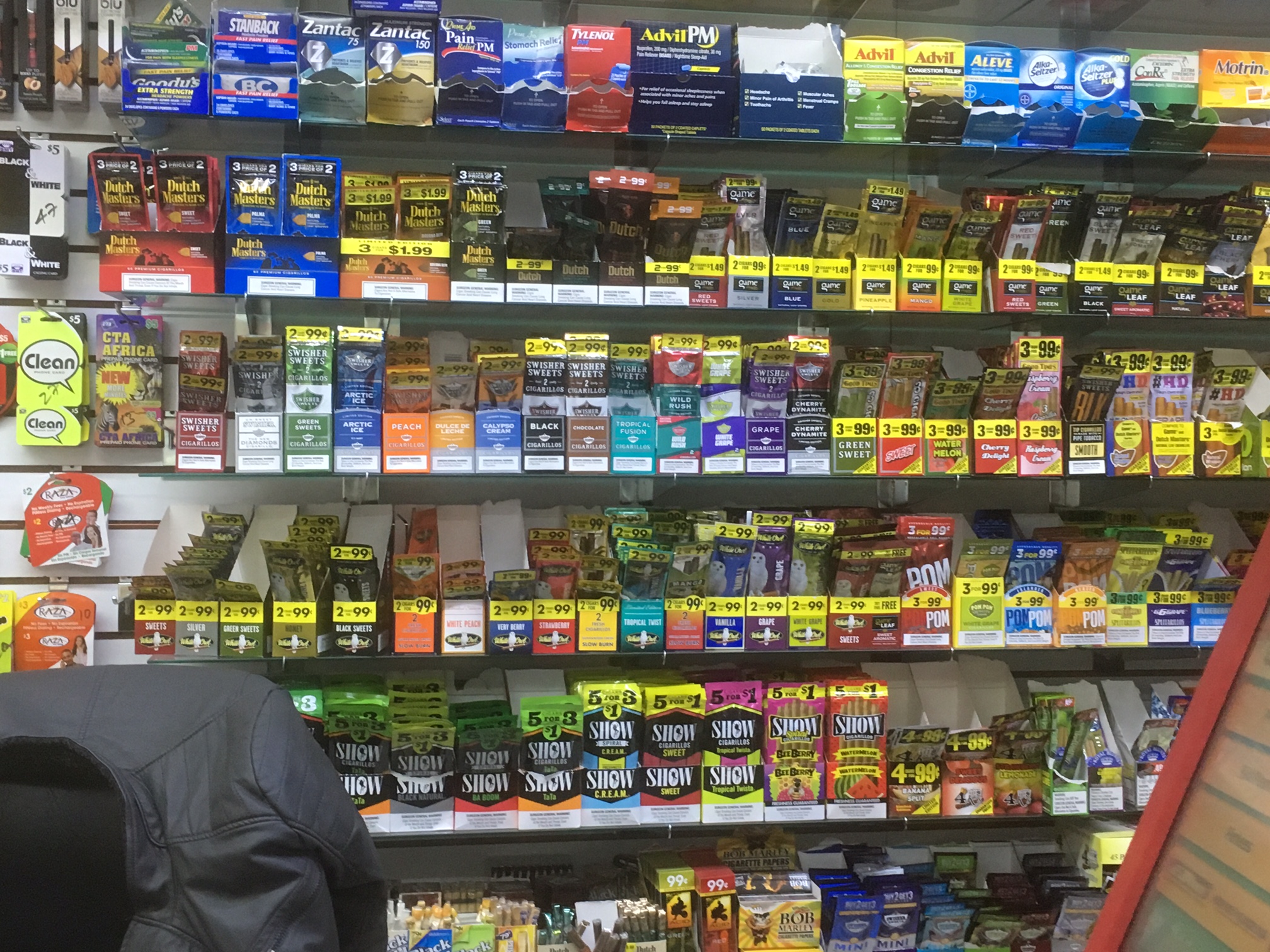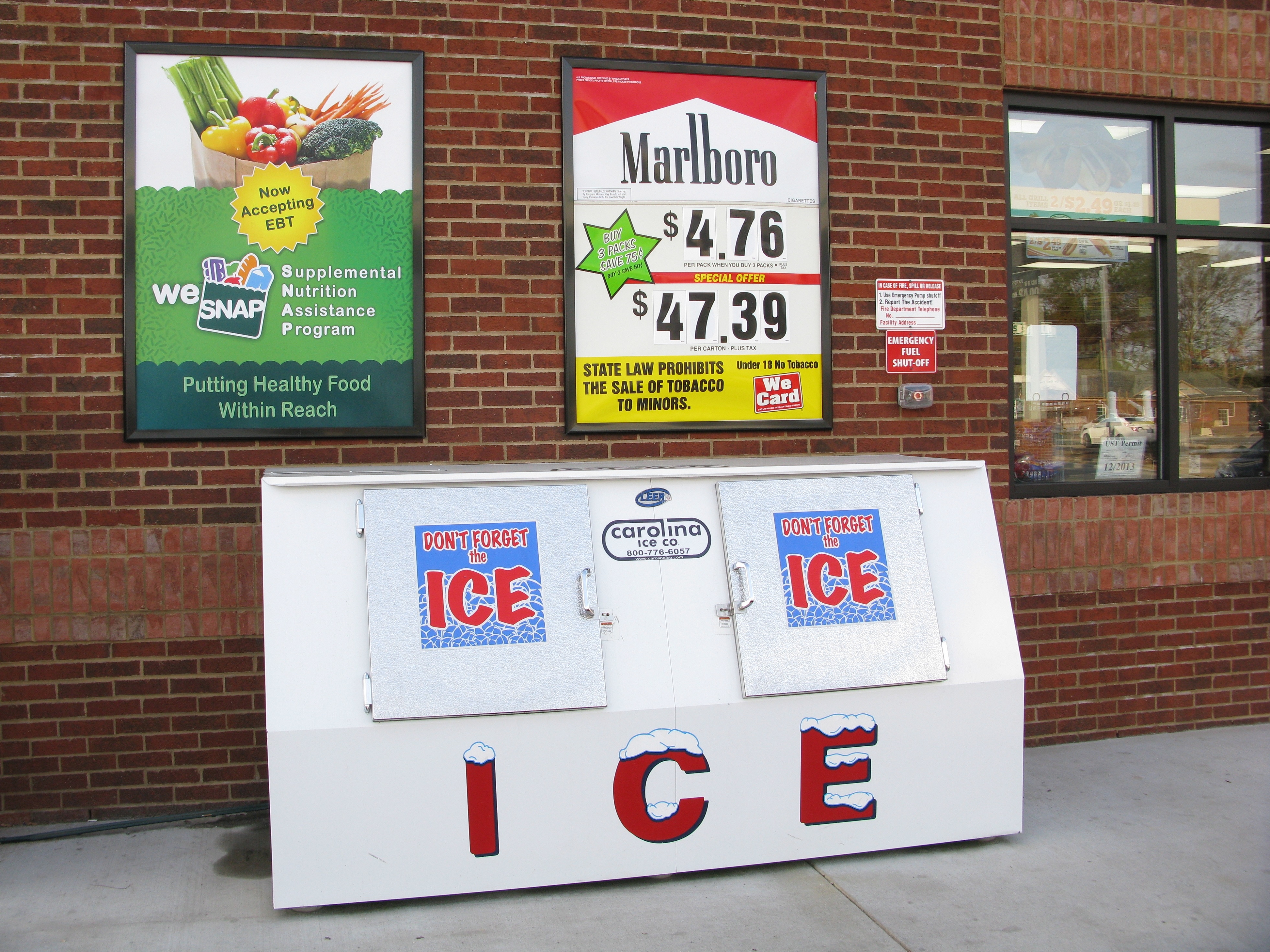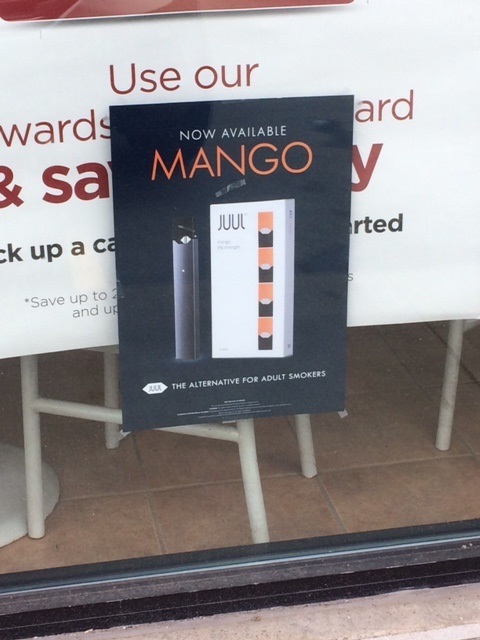Welcome to CounterTobacco.org’s “News and Research Roundup!” Each month we post a summary of the latest research, reports, and news stories on counteracting tobacco product sales and marketing at the point of sale (POS). Keeping up with what’s happening in the POS movement all across the country can help you choose policies and strategies that work best for your community. New research can help provide support for your work and evidence for the importance of the “War in the Store.” Have a story you don’t want us to miss? E-mail it to us!
New Research
- Impact of flavoured tobacco restriction policies on flavoured product availability in Massachusetts, Tobacco Control
-

flavored cigarillos and little cigars This study used retail store assessments to evaluate the change in availability of flavored tobacco products before and 12 months after the implementation of policies restricting the sale of the flavored tobacco products to adult-only establishments. Across 38 communities with a policy in place, flavored tobacco product availability decreases ranged from 27.2% to 50.9% after adjusting for community-level characteristics. Retailer compliance was high, with a 100% compliance rate in 21 of the 38 communities, and an 87.8% compliance rate in the other communities.
- Learn more about flavored tobacco products.
-
- A cigarette pack by any other color: Youth perceptions mostly align with tobacco industry-ascribed meanings, Preventive Medicine Report
- This study assessed California adolescents’ associations with colors of cigarette packs, including Marlboro black, gold, green, red, and silver/blue. Participants associations matched the industry’s intended associations, where 43.2% of participants attributed “extra strong” to black cigarette pack, 35.6% attributed “rich” to the gold cigarette pack, and 31.1% of participants attributed “menthol” to the green cigarette pack. Plain packaging policies could help eliminate the ability of colored packages to communicate associations of reduced harm or “light/mild” attributes.
- Tobacco industry involvement in children’s sugary drinks market, BMJ
- Tobacco companies RJ Reynolds and Philip Morris once owned sugary drink brands such as Hawaiian Punch, Kool-Aid, Capri Sun, and Tang. Industry documents show that they marketed these products to children with the use of colorful packaging, flavors, and cartoon characters, just as they did with tobacco products. These marketing techniques are still in use today, even though many of the the current brand owners have signed voluntary agreements not to market to children.
- News story: How Big Tobacco Hooked Children on Sugary Drinks, New York Times
- Tobacco Marketing at SNAP- and WIC-Authorized Retail Food Stores in the United States, Health Education & Behavior
-

SNAP and tobacco ads This study examined a nationally representative sample of tobacco retailers in 2015 and found that retailers that accepted WIC and SNAP were respectively 1.7 times as likely and 2.3 times as likely to display interior price promotions, compared to retailers that did not accept these government food assistance benefits, even adjusting for store type and neighborhood demographics. While retailers that accepted SNAP were also nearly 3 times as likely to display interior tobacco advertisements, stores that accepted WIC had 80% lower odds of displaying exterior tobacco advertisements. Researchers conclude that, “Millions of lower-income American families may be disproportionately exposed to tobacco marketing at food retailers. Federal, state, and local policies could create healthier retail environments by restricting the marketing and availability of tobacco products and increasing promotions and access to healthy food options.”
-
- Combatting and Preventing Preemption: A Strategic Action Model, Journal of Public Health Management and Practice
- Researchers from Grassroots Change and NYU’s Department of Public Health Policy and Management developed a strategic action model for combatting and preventing preemption, which has been used effectively to counter preemption in tobacco control. The model includes the following four activities: 1) monitor bills in the legislature and anticipate that preemption will be introduced or added to legislation in many forms; 2) engage grassroots activists and movements before preemption is introduced; 3)unify allies, including grassroots advocates, voluntary health agencies, local health departments, elected officials, statewide organizations, etc. on what they are willing to accept and to advocate for a savings clause and; 4) utilize media advocacy with nonpartisan, value-based messages to support local business and expose the negative impacts of preemption.
- Learn more about preemption in tobacco control.
Industry News
- NACS Rallies C-Store Industry to Fight FDA’s E-Cigarette Crackdown, Convenience Store News
- Reynolds tobacco debuts e-cigarette commercial, tightens online vape sales to combat teen use, CNBC
- Juul is Pitching Its E-Cigarette as an Anti-Smoking Tool to Employers and Insurers, NBC Bay Area
POS Policy in the Media
 Federal action
Federal action
- Federal judge in Boston sets timeline for FDA to produce graphic cigarette warnings, Boston Globe
- FDA puts 15 national retailers on notice for allegedly selling tobacco products to minors, CNBC
- FDA Commissioner Gottlieb, who raised alarms about teen vaping, resigns, Washington Post
- No Letup Seen in Crackdown on Youth Vaping by FDA After Gottlieb, Bloomberg
- Tobacco and E-cigarettes Lobbyists Circle as F.D.A. Chief Exits, New York Times
Menthol and other flavored tobacco
- This bill could ban e-cigarette flavors nationwide, CNN
- Public hearing to be held on bill to ban flavored tobacco products in Maine, WGME
- To save African American lives, flavored tobacco ban must include menthol cigarettes, Sacramento Bee
- San Francisco banned flavored tobacco sales. Now what?, KALW
- Lafayette supports ban on flavored tobacco products, Easy bay Times
- Aspen hopes to ban all flavored tobacco, Aspen Daily News
- Duluth business finds loophole to get around flavored tobacco sales restrictions, Live Local Duluth
- Larkspur bans flavored tobacco, activists say Marin on right track, Marin Independent Journal
- Menthol milestone, the anniversary no one is celebrating, San Francisco Bay View
Tobacco 21
- FDA commissioner Scott Gottlieb backs raising the minimum age for tobacco to 21, Washington Examiner
- Illinois House votes – again – to raise smoking age to 21 statewide, Chicago Tribune
- Utah Legislature decides to raise the legal age to use tobacco from 19 to 21 – except for active duty military, Salt Lake Tribune
- Maryland House, Senate pass different versions of bill banning tobacco sales under age 21, Baltimore Sun
- Kirby City Council votes to ban sale of tobacco to those under 21, KTXS 12 ABC
- State lawmakers push to raise Texas tobacco smoking age to 21, The Daily Texan
- Delaware Governor, Lawmakers Kick Off Push to Hike Age to Buy Tobacco to 21, WBOC
E-cigarettes
- E-cigarettes linked to heart attacks, coronary artery disease and depression, EurekAlert!
- Fake warnings on e-cigarette ads distract kids from truth, EurekAlert!
- Catskill youth take stand against vaping, HudsonValley360
- Trump proposes e-cigarette user fee to combat youth usage, Reuters
- Vaping is Big Tobacco’s Bait and Switch, New York Times
- San Francisco floats ban on e-cigarettes pending US Review, Washington Post
- Marlboro Maker teams up with Vice for vaping push, Financial Times
Other
- Pilot Rock first to support Umatilla County’s plan for tobacco license, East Oregonian
- Hookah smokers are inhaling toxic chemicals that may harm the heart, EurekAlert!
- Tobacco Companies Target Low-Income Areas of Milwaukee County, Study Proves, WUWM
- Why Walgreens won’t kick the tobacco habit, Crain’s Chicago Business
Find more stories in last month’s News and Research Roundup.
Know of a story that we missed? Email us, and we’ll be sure to include it in next month’s roundup!


